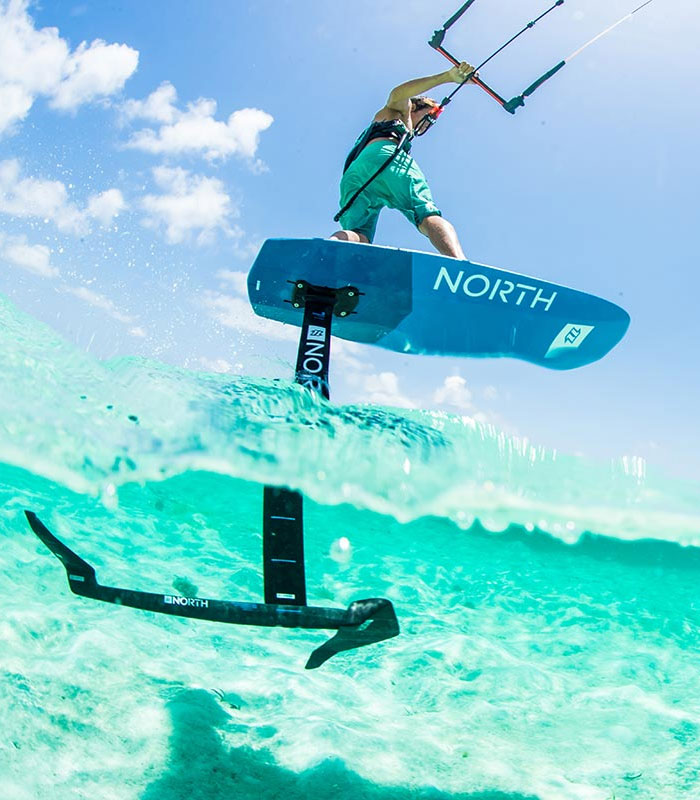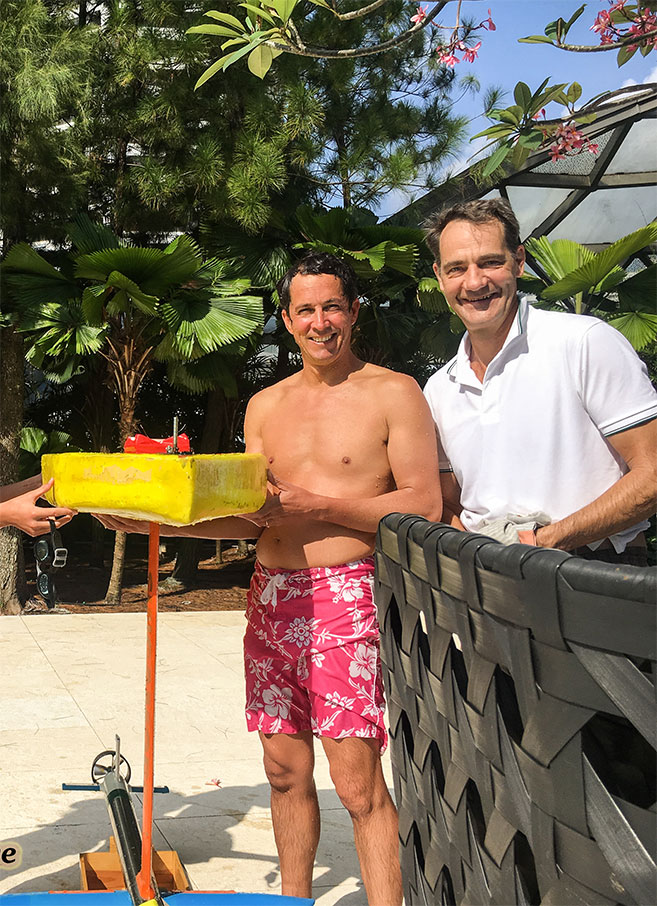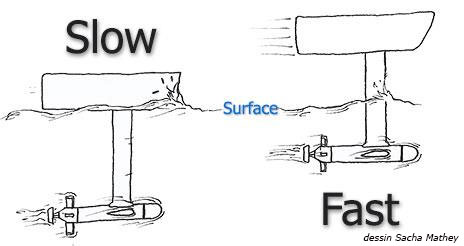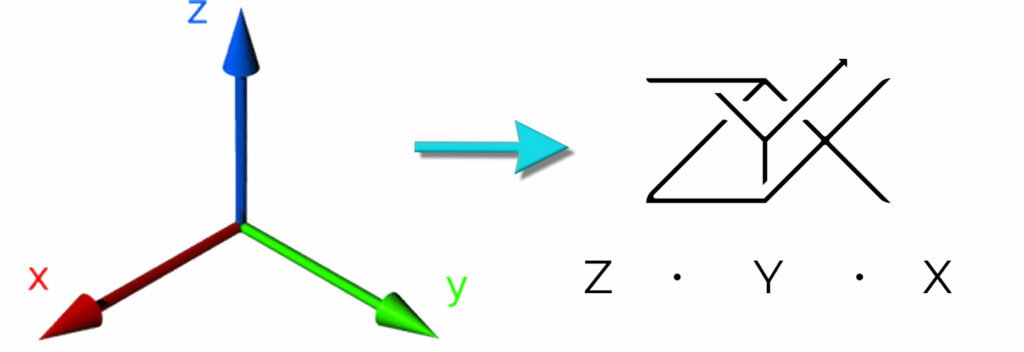How was the project born ?
Thanks to the observation of kite surfers, S. Mathey discovered that those who were equipped with foils needed sails 20% smaller than the others to be able to go out and train at sea with the same wind. This thanks to the absence of friction of the board on the sea. With 20% less energy, they could therefore fly above the water for their greatest pleasure and comfort.
S. Mathey realized that applying this to the transport of people or goods could prove to be very positive: more comfort and above all less energy consumption !


All the work then consisted, to compensate for the absence of any pilot, in equipping the wings under water with removable fins and the float with a "brain" which would allow it to detect oscillations and automatically stabilize the assembly. With the help of S. Saliou and M. Vieuille, they developed the SubAquaplane. A sort of underwater plane that from a certain speed pushes the float upwards until it is out of reach of the waves. See the concept explained in the diagram below.
The first tests of the SubAquaplane took place in Singapore in 2019. (Photo attached)
How does the SubAquaplane work ?

From a sufficient speed, the lift of the wings placed under water, raises the hull above the surface thus limiting friction. The rudder and elevators located at the rear as well as the ailerons on the wings are controlled by a computer which detects oscillations and corrects them instantaneously. In the event of a breakdown, the batteries and motors placed under water form a weighted keel which greatly contributes to making the boat safer by limiting the risk of capsizing.
Why the name “ZYX” ?
Where most boats float on the surface of the water, the ZYX controls and adjusts its height above the surface of the water, thereby adding a dimension. It adds a 3rd dimension that of height!
It is customary to use the letters XYZ to define the 3 axes.

ZYX : “travel in 3 dimensions ! »
